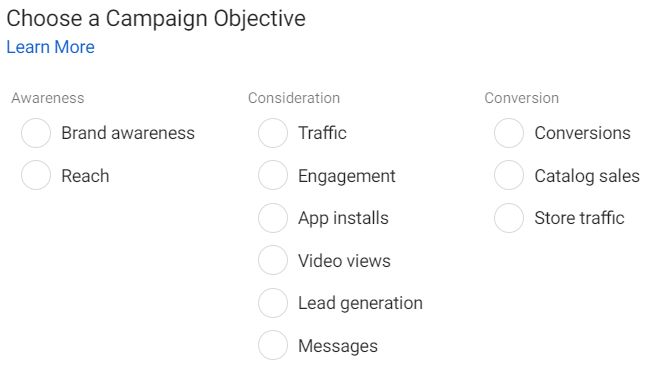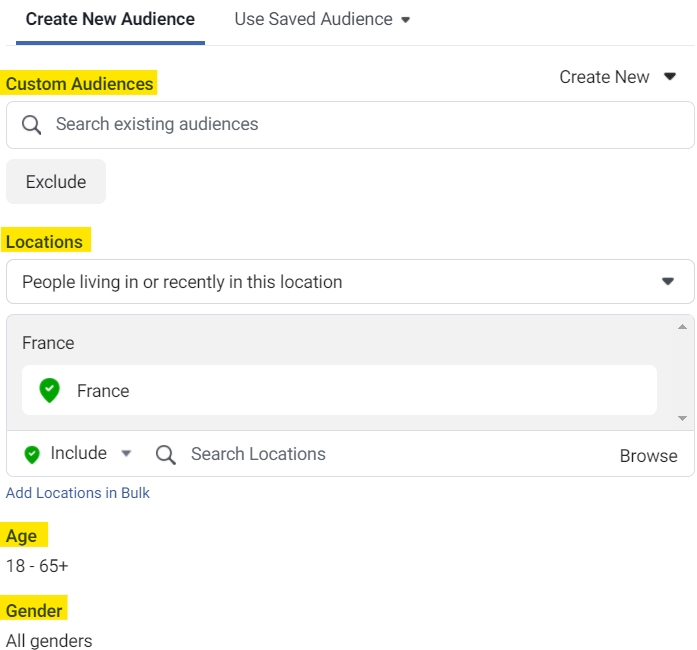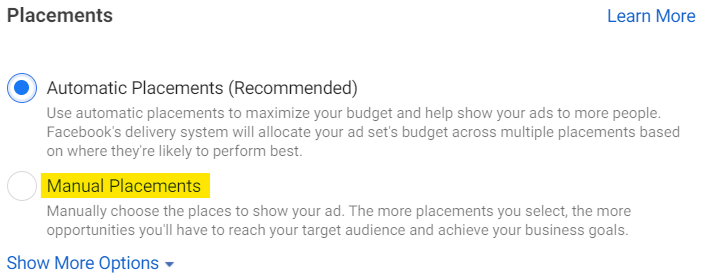Table of Contents
Purpose
As the other tutorials on Google display and YouTube, the idea here is to go through the main pitfalls to avoid when running a campaign on Facebook. I feel they are less of them on Facebook than on the other platforms, but still they are some to know. Facebook reach in France is ~45M users (well, accounts more precisely) – so roughly ⅔ of the French population – thus it’s a media platform that can really allow you to spread your message and drive traffic.
Note: Facebook owns Instagram and Messenger, so you can advertise on the 3 platforms via Facebook Ads manager. For ease of reading I’ll just write Facebook.
Overall principles
To successfully run a Facebook campaign, you need to bear the following points in mind:
- Let their algorithm do the job: that means provide their algorithm with the basic infos (objective – audience – creative), and then let it work. Their algorithm will find the best parameter combination to hit your objective. If you put too many constraints, it will be counter productive. It’s called “account liquidity”.
- Objective: select a specific conversion objective that matters to your business. It has to be both specific enough to be of value to you (not just “site visit”) and have enough volume so the algorithm can learn from it. For example if you have an e-commerce website, “Complete purchase” could be too restrictive, “Site visit” too vague, but “Added a product to basket” a good pick – both of value and with enough volume.
- Audience: don’t over segment it. Having a potential reach of less than 100k users is not recommended. Aim at 500k-1M users easily, Facebook will have more room for optimization. If you don’t know who to target, start with a 1% lookalike of a meaningful conversion (eg “Complete purchase”), that should do the trick.
- Creatives: it’s one of the most important parameters, don’t overlook it and don’t spend money on poorly executed creatives. Provide the platform with at least 3 creatives so it can test them against each other.
Set-up
Campaign level
Remember that you have the following parameters that are intertwined:
- Campaign objective organized by Awareness/Consideration/Conversion – list is below.
- Ad delivery optimization : the on what the algorithm is going to optimize for. (impressions, clicks, conversions, etc.). The proposed options depend on the Campaign objective selected above. It can be Impressions, Clicks, Conversions, etc. So for example, if you select Impressions, the algorithm will get you as much impressions as possible at the best possible price possible.
- Buying type : the how the algorithm buys the inventory for you. It can be using Reach & frequency or Auction. Basically Reach & frequency allows you to book in advance an inventory at a fixed CPM, while with Auction your CPM is dynamic and depends on the outcome of the bidding competition. Note that not all advertisers have access to Reach & frequency buying type.
 Campaign objective
Campaign objective

What you select here at the campaign level will determine the Optimization & Delivery options at the ad set level.
- For example, if you select Reach here, you will then have the choice between Impressions or Reach as ad delivery optimization possibilities
- If you select Traffic, you will then have the choice between: Landing page views, Link clicks, Impressions, Daily unique reach.
You need to be consistent with your overall campaign objective and understand how it works on Facebook’s side: if you optimize for Link clicks, Facebook will show your ads to people who are used to clicking on ads link, if you optimize for Video views, Facebook will show your ads to people who are used to watching videos. So it’s linked to the user behavior. Some people are more link clickers, some more video watchers, some more easy commenters, and Facebook knows it and will use it to improve your KPIs. That’s how it works.
From experience, the most used combinations are:
- Brand awareness objective, with Reach & Frequency as buying type (not every account has access to it)
- Conversion objective, with Auction as buying type. This is a good choice for both traffic and conversion types of campaigns.
With those 2 you cover the full Awareness/Consideration/Conversion funnel.
 Campaign budget optimization
Campaign budget optimization

Unless you have good reason not to (for example AB testing), activate the campaign budget optimization. It will allow Facebook to spend more money behind your best performing ad sets, and do the work for you.
Ad set level
 Audience
Audience

Don’t: over segment your targeting. For example do not target 25-30 years old, living in one specific city, who’s interested in dogs and got a master’s degree. You will end up with a small audience and put too much constraint on the algorithm and eventually have bad results.
Do:
- Go for lookalikes of a meaningful audience. For example lookalikes of visitors who added a product to their basket, or who have seen a specific lower down the funnel page. You need to find a good balance between a specific enough event (not just “site visitor” or “home page view” which do not filter out any unqualified visit) and one with enough volume (if you select “complete purchase” when you only have 1 purchase a day, Facebook will have difficulty to build your lookalike).
- Or use the socio demo filters to build a reasonably broad targeting like 30-50 years old male living in the top 5 cities.
In the location selection, beware of the following 2 things:
- Select People living in this location and not the by default People living or recently in this location. Your targeting will get more precise.
- When you select a city to target, Facebook by default setting includes a radius of 25 miles around the city, which is quite large. Depending on your geographical reality, I’d suggest you select Current city only or the minimum 10 mile radius.
 Placements
Placements

Contrary to the recommended options, do not go for Automatic Placements. 2 reasons:
- They include a lot of poor quality placements, where your ads barely get a chance to be noticed, and you expose yourself to more fraud too.
- They include “pixel triggering” types of placements, ie they allow for a high volume of impressions on hundreds of thousands of devices so the campaign can attribute more conversion to itself (especially as by default you will have a post view window attribution). That’s why the campaign will claim to be more efficient, ie to bring you more conversions at a better cost. But the reality is that those conversions are likely to have happened anyway, and you will just have spent some additional money.
So, select Manual placements. The below will appear.

Get rid of Audience Network. This is where most of the above mentioned crap happens.
Now, within the placements list, be consertive and keep:
- Facebook News Feed
- Instagram Feed
- Facebook Video Feeds
- Facebook Stories
- Instagram Stories
- Messenger Stories
- Facebook Instant Article
This is where your ads have the best chance to get noticed and have an impact. Logically, these placements are a little bit more expensive, but this is the price to pay to get some quality.
Ad level
 Creative
Creative
Per se, there’s no pitfall on the ad creation step, and there’s many existing content explaining how to create impactful Facebook ads. I can only stress how important the ad creative piece itself is. Put yourself in your customer’s shoes. He is bombarded with ads everywhere and all day long. So not only do you have to be on the most noticeable placements, but you also have to serve an ad that gets the user’s attention and memorization. It’s a tricky battle. Good luck.